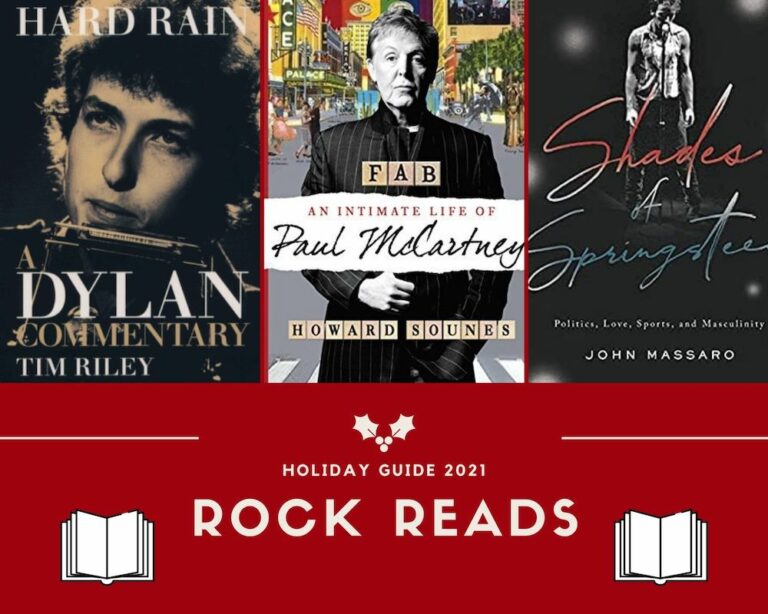Looking for a celebration of music in words to stuff the stockings of the rock fan in your life?

Rememberings – Sinéad O’Connor (2021)
This could have gone badly. As much as I adore and respect Sinéad O’Connor for her music, her socio-political stands, her commitment to her art and her causes, both real and imagined, she has been anything but a focused voice on any of them. Having battled mental and emotional illness most of her life while also displaying in her public persona a head-spinning level of mercurial behavior, when I heard she was penning a memoir I was as dubious as when Bob Dylan released what turned out to be a mostly fantasy-addled effort. However, my trepidations were happily proved unfounded. Unlike Dylan’s 2004 uneven Chronicles Vol 1, Rememberings is a brutally honest, and most importantly, consistent work. It reads like the imprint of a cruel world on the soul of a sensitive artist with just enough self-examination and personal epiphanies to induce awe.
Firstly, O’Connor is no writer, per sé. (To be fair, many of these rock and roll memoirs are hardly nods to literary devotion.) Still, there is a writer’s alacrity in the way O’Connor tells her story, bridging the gap between having spent decades burying the horrors of her childhood and her exploitation as a young singer-songwriter, and later MTV superstar in an age of shifting genres and interests, and her artistic integrity. All this transpired in a male-dominated industry that kicked her around for nothing more than its own willful ignorance and insecure self-preservation. O’Connor faces her demons and bravely shares the experience.
Parts of Rememberings is as poetic as its un-grammatical title. O’Connor uses her words and phrases to dig deeper into her psyche, allowing the reader a ringside seat. This is a frightening but rewarding endeavor that helps us understand that a portrait of a true artist is no walk in the park. Much of the myths and well-worn stories of her time under the looming control of her mentally ill mother or the nunnery for which she learned to use music to connect spiritually and psychologically with the world all the way to her weirdly framed wars with the Catholic Church, the U.S. government, and the music business are busted wide open.
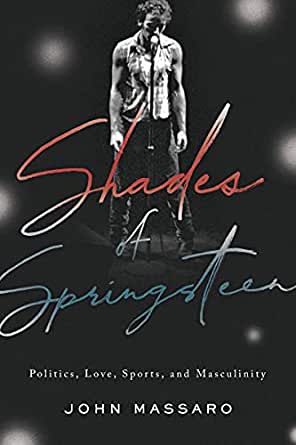
Shades of Springsteen: Politics, Love, Sports, and Masculinity – John Massaro (2021)
John Massaro is not a contemporary of Bruce Springsteen, nor one of those starry-eyed true believers that oft times slather on the worship sauce normally associated with the famed singer-songwriter’s career and exploits. In fact, although a fan and one that sees a reflection of his own biography in Springsteen, the octogenarian author of Shades of Springsteen, a professor at SUNY Potsdam College in New York, was only introduced to his Jersey brethren’s work in the mid-1980s, when the Boss was already seated atop the music world. Recovering from clinical depression, as is Springsteen, the author was whisked away on The Boss’ musical tales of escape, evolution, and redemption. This book is a tribute to all of that.
Massaro’s thesis of connective tissue in the themes of the book’s subtitle Politics, Love, Sports and Masculinity that he artfully argues drive Springsteen’s canon and best explains the songwriter’s ability to overcome his own issues of depression, is solid. He digs deep, but with an entertaining flair, explaining how all of these themes comes through in nearly every stanza of Springsteen’s songs.
There is a fine needle Massaro threads here, but he does it with great care through stories of his own experiences in many of the places around New Jersey, specifically the Shore, of which Springsteen built into iconic symbols of the region. Despite being a generation removed from the songwriter, Massaro explored many of the same archetypes, long held by those from N.J. that Springsteen mined decades later.
Although, I do enjoy most of Springsteen’s music and have different periods and songs I cherish more than others, it is my experience growing up in Freehold, New Jersey during the early to late 1970s in the shadow of his immense influence of our burgeoning culture that resonates with me. I am further along the line of generations to Massaro, but feel, as he does through Springsteen’s lyrics, that the connective tissue of lasting art is what makes us want to listen to these songs over and over and take the time to read about them too.
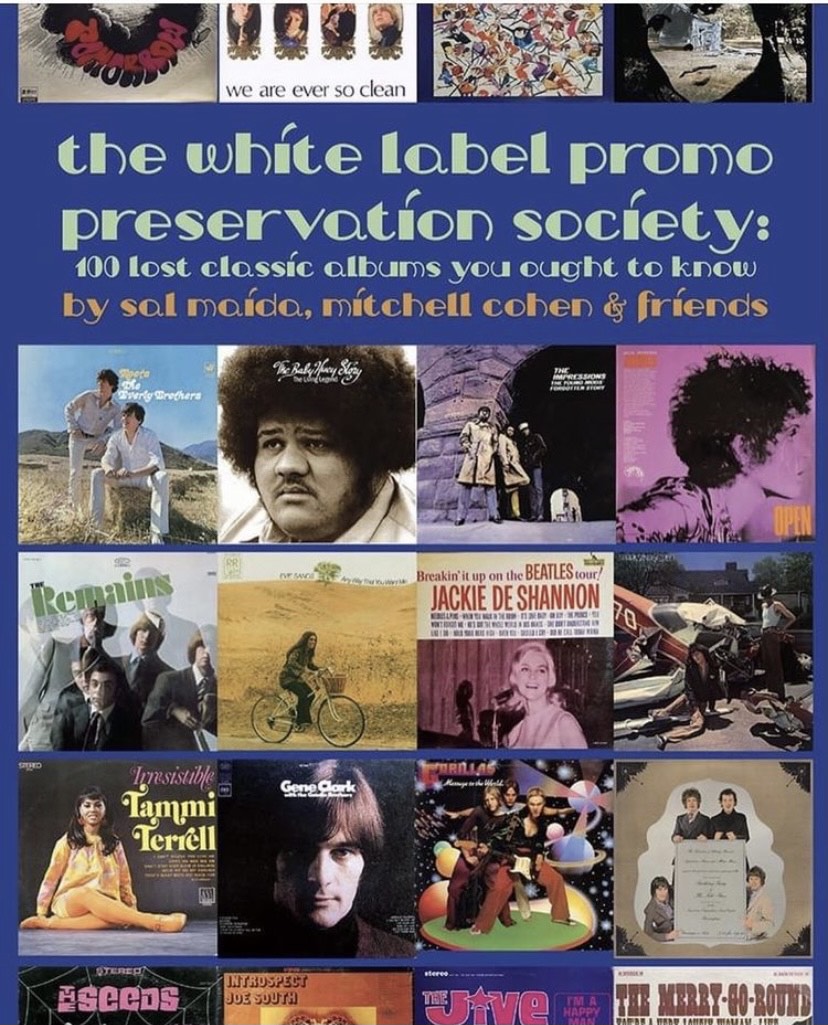
The White Label Promo Preservation Society: 100 Flop Albums You Ought to Know – Sal Maída, Mitchell Cohen & Friends (2021)
Full disclosure: I was gifted this book whilst in Austin, Texas in late summer by one of its contributors, Mr. David Immerglück, a multi-instrumentalist for Counting Crows, the Monks of Doom, and other musical projects. A fellow lunatic music geek, it makes sense that the man we all affectionately call Immer would be included here with his essay about the obscurity of what he dubs “Welsh hippy rockers,” MAN, and their 1974 musical manifesto, Rhinos, Winos & Lunatics. But Immer is but one voice, and the MAN record, which I was gladly introduced to in this volume, is only the tip of the geek-dom iceberg. After just a few of these entrees, you will become a full-fledged member of The White Label Promo Preservation Society.
For newbies to this affliction, a “white label promo” is the vinyl hound’s most cherished find. Back in the day, these were unreleased-to-the-wider-public versions of records that would be shared only with reviewers and radio stations. I have more than a few in my humble collection, but it is only a wink and a nod to the converted, because this compendium casts a wider net. We are introduced by decades to dozens of hidden gems, lost classics, and otherwise bizarre oddities – all of which deserve the attention paid here. Thanks to the efforts of Sal Maída and Mitchell Cohen, who curated the book – as well as added their own essays – there is a place for forgotten worthiness to shine.
It is not just selections from fringe artists like Ars Nova, Zal Yanosky, Bunky & Jake, The Remains, and Milk ‘N’ Cookies, but significant names that released dismissed or plain missed classics; T Rex, The Drifters, Todd Rundgren, The Kinks, Fairport Convention, and much more. The care, excitement, and incredible research done on each and every album is beyond impressive. And now with streaming services and YouTube, readers can quickly try out these records and then join the fray in tracking them down on their original labels. The White Label Promo Preservation Society: 100 Flop Albums You Ought to Know is a record-lovers paradise, but also a lost period of pop music during its heyday that needs to be revisited and enjoyed by those who were not around to hear these “flops.”
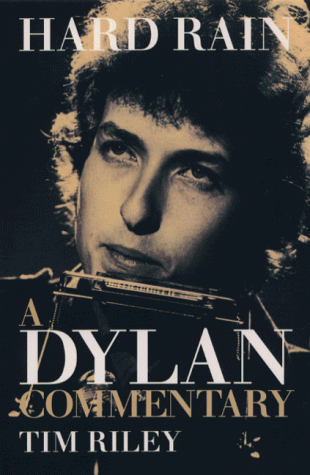
Hard Rain: A Bob Dylan Commentary – Tim Riley (1993)
What a wonderful read. Author Tim Riley, Associate Professor and Graduate Program Director at Emerson College, who has written extensively about the Beatles and other music from the period, takes a welcomed unique slant on the Bob Dylan story in Hard Rain: A Bob Dylan Commentary. It is indeed a “commentary” from the first paragraph, methodically taking apart the accepted narrative of this mysterious icon to concentrate on what made Dylan a musical force across generations.
Riley begins with Dylan’s genuflecting to the blues more than folk, which makes sense with the budding songsmith’s teen obsessions with Little Richard and Elvis Presley and later with his dramatic move to an electric sound. Yet this creative foundation is wholly ignored in many depictions of Dylan’s initial absorption of Woody Guthrie and his later tap into the early 1960s Greenwich Village folk movement. It is also a solid footing for how the author follows the celebrated singer-songwriter’s zigzag artistic sojourn, always on the move, always challenging both his own talents and the expectations of his audience.
It was especially intriguing to read something this close to the bone before the later waves of Dylan comebacks over the past decades – some hit or miss. I agree with almost all of Riley’s assessments of Dylan’s eighties into nineties works and performances. I endured one of those erratic shows at Radio City Hall that was just awful. I brought a young friend whom I was tutoring in the Dylan canon and found myself apologizing for it throughout.
Also, it is ironic that right before I read this (thanks to the author for gifting me a copy, and his inclusion as a voice in my next book) when I was finishing up Sinéad O’Connor’s memoir. In the book’s epilogue, Riley rightly takes to task Dylan’s silence in the wake of a New York City crowd booing O’Connor after her infamous Saturday Night Live performance in which she ripped up a picture of the pope. The hypocritical tone-deaf idea that during a Bob Dylan tribute show, which Dylan attended, the celebration would ignore his own bravery to shake the foundations of power and take on the status quo, is articulately deconstructed.
Hard Rain: A Bob Dylan Commentary is a must read for any Dylan fan not mired in rock star worship, something the artist would likely abhor.
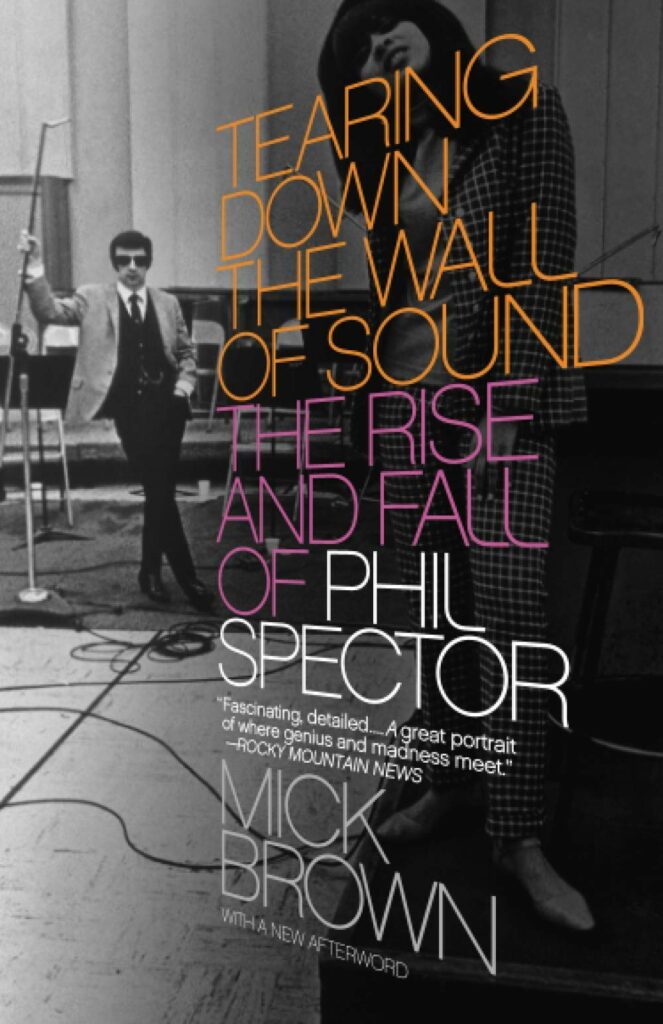
Tearing Down the Wall of Sound: The Rise and Fall of Phil Spector – Mick Brown (2008)
If you’ve heard the rumors about Phil Spector that range from unhinged, narcissistic controlling master artist to drug-addled, wild-eyed half-mad gun-toting murderer, then it’s time to get the stories, good or ill, from Mick Brown’s translucent Tearing Down the Wall of Sound.
This was such a fun read, made possible by my friend, singer-songwriter Eric Hutchinson, whom I have written about in this paper since 2006, and gave me his copy. He is not only a wonderful human being, but another complete music geek and a sucker for early 1960s pop music. Love him or hate him, all of that all starts with Phil Spector, musician, songwriter, producer, and inventor of a style of music that bridged the incredible history of rock and roll from its infancy into the early to mid 1950s to the arrival of the culture-altering Beatles. And this book covers it all, with an unblinking objectivity.
The author begins the book with an interview he conducted at Spector’s Californian mansion, just months before the alleged murder of a woman in the same room. What Spector tells him will be unfurled with each chapter, giving you direct access to the reasons for his bizarre behavior, his mind-games, his obsession with violence, and the gnawing paranoia that comes from being a relentless perfectionist.
Man, the stories in here are epic and told with such detail, adding the anecdotes and memories by those who sat beside Spector at the control board or during meetings in the halls of the biggest record companies in the world. Spector is everywhere, through the seminal moments of rock music’s infancy, and Brown takes you on that journey. The humor, madness, travails, and triumphs of a complicated character is given its due in Tearing Down the Wall of Sound.
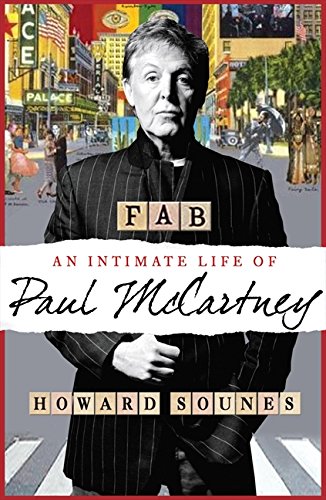
Fab: The Intimate Life of Paul McCartney – Howard Sounes (2010)
I spent a lot of time with the songwriter, the musician, the icon that is Paul McCartney over the past year-plus whilst working on my upcoming book, Take a Sad Song… The Emotional Currency of “Hey Jude,” and as such spent a ton of that time researching his life and times. The best of these I found is Howard Sounes’ Fab: An Intimate Life of Paul McCartney. This led me to asking Mr. Sounes to chime in on my project. Crucially, he did – and my book is better for it.
Sounes is a man who knows greatness. He has written about poet Charles Bukowski and icon Bob Dylan in serious detail. In Fab he sees where that greatness lies, its origins (nature to nurture) and where that lead – the Beatles and beyond. There is something you find in Sounes’ McCartney that is mostly absent from his other biographies. Each of McCartney’s biographers have their own spin; many of them are too busy worshipping (that affliction again) and others just trying to tear him down. Sounes works both angles with precision, refusing to ignore much of what is hard to describe about someone as prolific and famous and incessantly covered over six decades as Sir Paul. McCartney is a man of many shades, and they are all explored here.
I especially love how Sounes, a Brit, digs below McCartney’s surface play (a consummate salesman) to his funnier, grittier side; the one that would entrance a surly and focused teen John Lennon. That Paul McCartney is always there. More than any of his contemporaries he knows from whence he came and stays truer to his nature, which, as Sounces points out throughout his book. It is what gives him the antennae to find those brilliant songs.
There are a lot of books on Paul McCartney – not even counting Beatles’ books – many of which I have reviewed here. But after the deluge I have worked through, while there are merits to many out there, this is the one to read if you want to get past the noise and find the signal.


